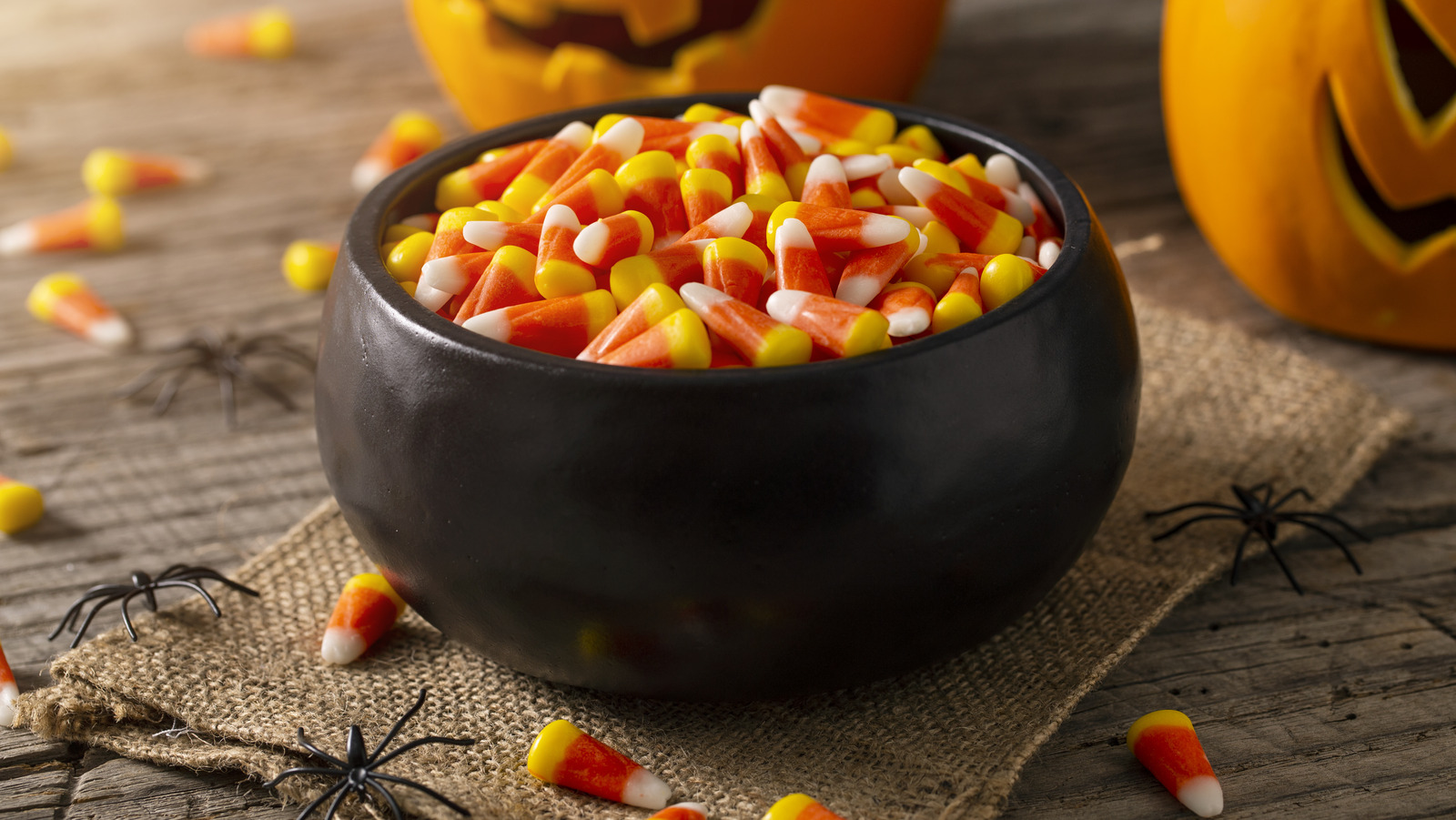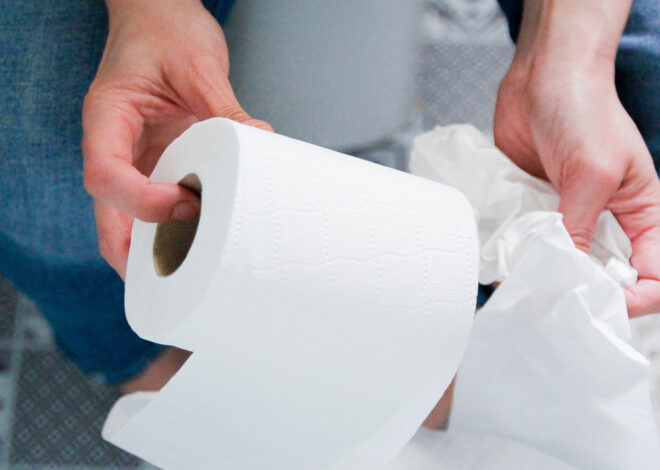
Myths About Candy You Should Stop Believing – Health Digest
We may receive a commission on purchases made from links.
Just after Labor Day (and sometimes before), stores begin to stock their shelves with Halloween candy. You have so many choices of candy to offer trick-or-treaters, from candy corn to Sour Patch Kids, but don’t forget to get an extra bag for post-Halloween snacking.
Your favorite candy more than likely has an ingredient that’s often vilified in the health industry — sugar. The American Heart Association suggests that men have no more than 36 grams of added sugar a day. Women should limit their added sugar to 25 grams a day. If you eat 18 pieces of candy corn, you’re already at 23 grams of sugar.
Sugar is often linked with many of the ailments people have, such as diabetes, obesity, and poor dental health. While some of these associations have merit, some myths about candy are worth debunking. Health Digest asked the Head of Nutrition for Nucific Dr. Amy Lee and Aspen Dental dentist Dr. Whitney White to help us clarify some of these myths about candy and sugar.
Myth: Sugar feeds cancer cells
One myth about candy is that sugar somehow feeds cancer cells. Lee says this isn’t correct. “Sugar (forms of glucose) is utilized by all cells, not just cancer cells,” she said. “Cancer cells happen to have malfunctioning metabolism and can look like they take up more sugar but in fact, it is the malfunctioning genes of that cell that are causing abnormal metabolism.”
This doesn’t mean that there isn’t a link between high sugar intake and cancer, however. According to a 2022 review in Cancers, too much added sugar in your diet can cause obesity, inflammation, and changes in metabolism. These factors can increase your risk of several types of cancer.
Your overall diet can play a role in your risk of cancer too. A healthy diet includes plenty of fruits, vegetables, whole grains, and beans and reduces refined sugars and processed meats. That means you don’t necessarily need to cut out sugar completely, especially if your diet is relatively healthy and balanced. “… I see people placing themselves on these restrictive diets with no sugars/carbs and [they] forget that the body does need this macronutrient to stay healthy,” said Lee.
Myth: Candy causes diabetes
More than 10% of people in the United States have diabetes, according to the American Diabetes Association. Diabetes occurs when your body either doesn’t produce insulin (type 1) or doesn’t use insulin properly (type 2) to bring down your blood sugar. Your risk of type 2 diabetes increases with age, and most type 2 diabetes diagnoses occur in people age 45 and older.
It’s easy to assume that the sugar in candy can cause diabetes. However, sugar isn’t necessarily the cause. A 2003 study in Diabetes Care looked at the sugar intake of women over 45 and found that sugar consumption wasn’t linked to an increased risk of type 2 diabetes. Lee says long-term overeating and weight gain can lead to type 2 diabetes because they cause a dysfunction in your metabolism.
Even if you have diabetes, Lee says candy isn’t necessarily a “death sentence.” “A person who cannot metabolize glucose found in food sources should eat ‘less’ of the simple or refined sugars/carbs and be able to utilize complex carbs more effectively by taking the appropriate medication and increasing activity level to retrain the body to uptake glucose as fuel,” she said.
Myth: Sugar-free candy is better for you
If your favorite candy isn’t loaded with sugar, it probably has something artificial in it to make it sweet, such as aspartame or sucralose. The World Health Organization says these non-sugar sweeteners (NSS) can increase your risk of type 2 diabetes, cardiovascular disease, and early mortality. Although most NSS have zero calories or fewer calories than sugar, they don’t help you control your weight for the long term. Some of these sugar-free candies also cause gastrointestinal issues.
You might choose sugar-free candy over regular candy to please your dentist, but White says sugar-free candy isn’t necessarily better for your dental health. “While sugar-free candy is often better for your teeth than full-sugar candy, some can still be high in acidity or sticky, which can contribute to dental issues,” she said.
“Keep in mind that sour candies aren’t just sugary–they are also very acidic,” White added. “Acid is what can erode tooth enamel and increase tooth sensitivity.” The enamel on your teeth can deteriorate when you eat foods with a pH of 4.0 or less. Candies such as sour gummy bears, Starburst, SweeTarts, and Sour Skittles have a pH of less than 3.0.
Myth: You have to brush your teeth right after eating candy
You’ve been told when you were a kid to brush your teeth after every meal. You might even feel all that crud in your teeth after eating a good dose of candy, so you break out your toothbrush to eliminate any damage to your teeth. However, White says this isn’t the best thing for your teeth.
“The reality, however, is that brushing immediately after can actually cause more damage to your enamel than just eating the candy,” she said. “Waiting 30 minutes afterward to brush is the best thing to do. This will give your saliva a chance to neutralize all of the acids left behind.”
A similar myth about eating candy is that it’s better to spread your treats throughout the day to protect your teeth rather than eating all of your Halloween candy in one sitting. White says neither practice is better for your dental health because your teeth have to endure candy’s sticky consistency. Candy also causes your mouth to produce acids that can damage your enamel.
“Eating a lot of candy in one sitting versus eating throughout the day is technically a shorter period of acid exposure, while snacking throughout the day keeps your mouth in an acidic state longer,” White said. “Your saliva is what helps neutralize these acids, and it needs time to do that, so if you’re snacking throughout the day it may struggle to keep up.” To keep your teeth healthy, White suggests enjoying candy in moderation while following good oral hygiene practices.
Myth: All candy is unhealthy
Swearing off candy could help reduce the amount of added sugar in your diet, but remember that many other types of food have hidden sugars that can wreck your metabolic health. You could easily max out your added sugar limit for the day if you add ketchup, barbecue sauce, teriyaki sauce, or salad dressings to your foods. Yogurt and breakfast cereals can be healthy, but many of them are loaded with added sugar too.
Lee says some candy is relatively healthy because it’s made from the natural sugar in fruit. “For example, dried fruit or dehydrated fruits/fruit skins are considered candy. This can be such a great way to provide one and serve that sweet tooth without the idea of just taking on plain sugar,” she said.
If you love chocolate, choose dark chocolate for its health benefits. Dark chocolate has the most antioxidants — such as polyphenols, flavanols, and catechins — that can protect your body from damage from free radicals. “I think the generic or common chocolates we see at the stores are packed with sugars and other ingredients when in reality, pure chocolate can be bitter with no sweetness,” Lee said.
She suggests getting your taste buds used to chocolate with a high percentage of cocoa to reap the benefits of dark chocolate without a crazy amount of added sugar. For example, three squares of Ghirardelli’s Intense Dark 72% Chocolate have 8 grams of added sugar and 3 grams of fiber.


